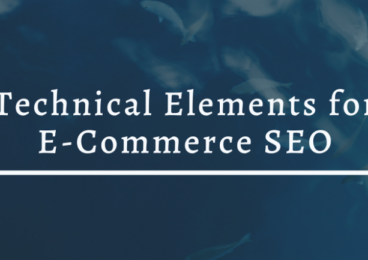 Reading Time: 3 minutes
Reading Time: 3 minutesSEO can be a fickle discipline. It is rarely consistent, and trends come and go as quickly as algorithms update. A consistent boon for SEO, however, has been the humble H1 tag. Often overlooked, headings can actually improve your SEO for the long term. Here, we’ll learn about what the H1 tag is, the role it plays on your page, and how you can improve your search engine ranking while engaging visitors on your site. That seems like a lot for one headline, but soon you’ll see just how important headers can be for your ranking in the SERPs.
First Off: What Is a Heading Tag?
Perhaps the most important question: what is a header, or heading tag, and why should we care about them? The simplest explanation is this: before the internet, print media used headings to break up big blocks of text and make them more palatable for the reader. Even in the days before the minuscule modern attention span, we used headers to emphasize certain aspects of writing and help break up and highlight content. A newspaper headline, would be an example of a header.
In the 1990s, webpages become more popular and included blocks of text. When developing webpage content, developers also used heading tags for the purpose of breaking up content and introducing longer blocks of text. These tags were represented by a capital H and a number that corresponds to how the information fits in the hierarchy. The article title, for example, is typically an H1. The subtitles, which break the content down into smaller sections, are H2s. Clusters of information that fall under the same classification of the H2s could be H3s or H4s. A simple example might look like this.
Creatures of the Sea [H1]
Sea Mammals [H2]
Porpoises [H3]
Bottle-Nosed Dolphins [H4]
Whales [H3]
Humpback Whales [H4]
Fish [H2]
Sharks [H3]
Hammerhead Sharks [H4]
Puffer Fish [H3]
Etc.
Defining the H1 Tag
As you can see from the example, an H1 tag is the biggest and most important tag for the individual website page. It works to introduce the content on the page in its entirety – it should address the topic or name the page itself. People choose to make their H1 tags long and descriptive, while others limit it to a few words that match the title of the page. The H1 tag may depend on whether the content is a blog post or a static web page.
No matter how you use them, there are SEO benefits that come with using keywords in your H1 tags. For example, if you are writing a static page about bike parts for your store in Irving, TX, then is makes sense to have an H1 tag that says something akin to “The Best Place to Buy Bicycle Supplies.” At the same time, if you’re looking to attract local customers, a better fit might be “The Best Place to Buy Bicycle Supplies in Irving, TX.”
H1 Tags present an opportunity to outrank the competition when it comes to search. At the same time, it is important to only use keywords that are relevant to your business or the subject at hand. Creating H1 tags for the sake of clicks will upset your visitors and increase your bounce rate, which can negatively affect your SEO.
Best Practices For SEO and Your H1 Tags
H1 Tags do not serve as a ranking factor for SEO, but it is still essential to spend some time on them because of the benefits they can provide. Proper H1 tags can improve user experience, increase dwell times, and ultimately help your website rank better for these factors. The following are some suggested best practices for your H1 tags:
- Have an H1 tag for each page. If you go straight into body copy, your visitors will not know what you’re writing about and will be more likely to navigate away from the page at hand.
- Each H1 tag should be unique, because duplicate headlines can lead to dings on your search engine ranking.
- Use keywords that are both descriptive and engaging.
- Don’t jam your H1s with keywords to get ranked – this is an old-school tactic that now actually gets punished by website crawlers.
- Be creative and have a little fun making your H1 tags. They don’t have to be short or boring – limit yourself to a sentence, but don’t be afraid to engage your users with H1 content that is engaging as well as relevant.
H1 Tags can be important for your SEO. These humble headlines do more than just inform your audience about the content they are about to read – they also provide important opportunities to include keywords that can help your ranking on popular search engines like Google and Bing. They work to provide indirect benefits that can affect metrics like dwell time, bounce rate, and more. Perform a simple SEO audit to make sure your H1s don’t have duplicate content, and let your creativity shine when creating these headlines for blog posts and static pages alike.
At Vizion Interactive, we have the expertise, experience, and enthusiasm to get results and keep clients happy! Learn more about how our SEO Audits, Local Listing Management, Website Redesign Consulting, and B2B digital marketing services can increase sales and boost your ROI. But don’t just take our word for it, check out what our clients have to say, along with our case studies.




